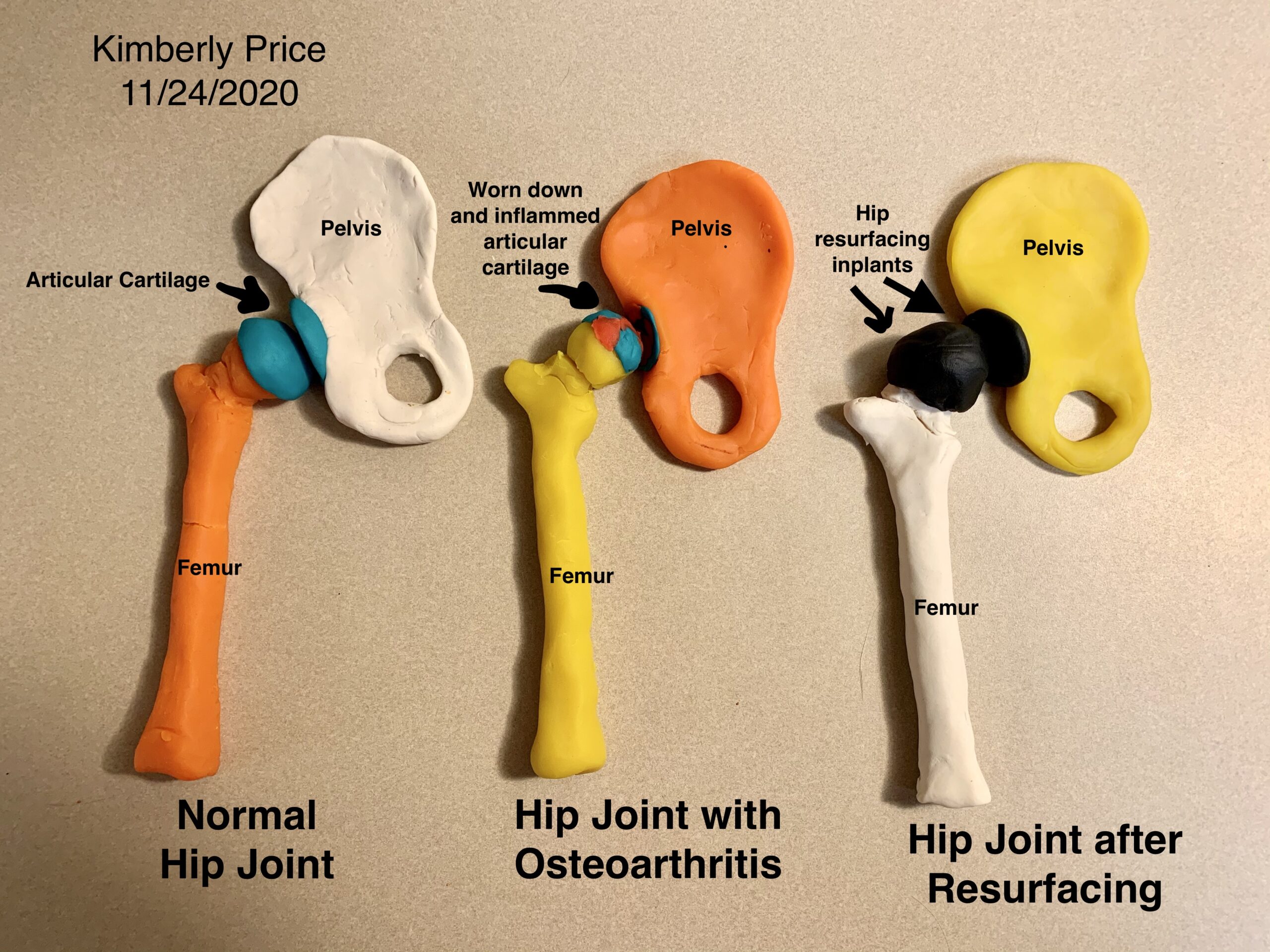 I did my STEAM project on osteoarthritis of the hip joint. I used play doh to create three different models of the hip joint including a regular hip joint, an arthritic hip joint and a hip joint after hip resurfacing.
I did my STEAM project on osteoarthritis of the hip joint. I used play doh to create three different models of the hip joint including a regular hip joint, an arthritic hip joint and a hip joint after hip resurfacing.


 I did my STEAM project on osteoarthritis of the hip joint. I used play doh to create three different models of the hip joint including a regular hip joint, an arthritic hip joint and a hip joint after hip resurfacing.
I did my STEAM project on osteoarthritis of the hip joint. I used play doh to create three different models of the hip joint including a regular hip joint, an arthritic hip joint and a hip joint after hip resurfacing.
Kim did a wonderful job on her essay explaining how osteoarthritis affects the hip joint! I loved how it was presented as a case study between a patient and doctor. With this approach she was able to hit several class objectives: know the parts of bone and their shape, and even a little of joint types. Osteoarthritis is most commonly seen in the elderly because over time, wear and tear causes a degeneration of the joint cartilage that exposes and erodes the underlying bone. You can see this as you compare Kim’s playdoh models- the normal hip joint has a healthy and abundant cartilage coat, but the model with osteoarthritis has almost no coat because you can see how the femur head and the acetabulum are exposed. This can lead to pain and discomfort during normal gait activities, forcing the individual to an abnormal gait to reduce the pain, as noted in the patient’s background in Kim’s case study. To help the patient, Kim spoke of treatments such as physical therapy and steroid injections. However, the more effective treatment is hip resurfacing as shown in Kim’s third and final playdoh model. While it is more invasive by cutting open the lateral hip, it allows for molded implants to replace the original ball and socket. It will fit like a warm glove, relieve the patient’s pain, and get them back to walking in no time! Such a cool and inventive way to fix a common infliction!